My 5 Favorite House Plants
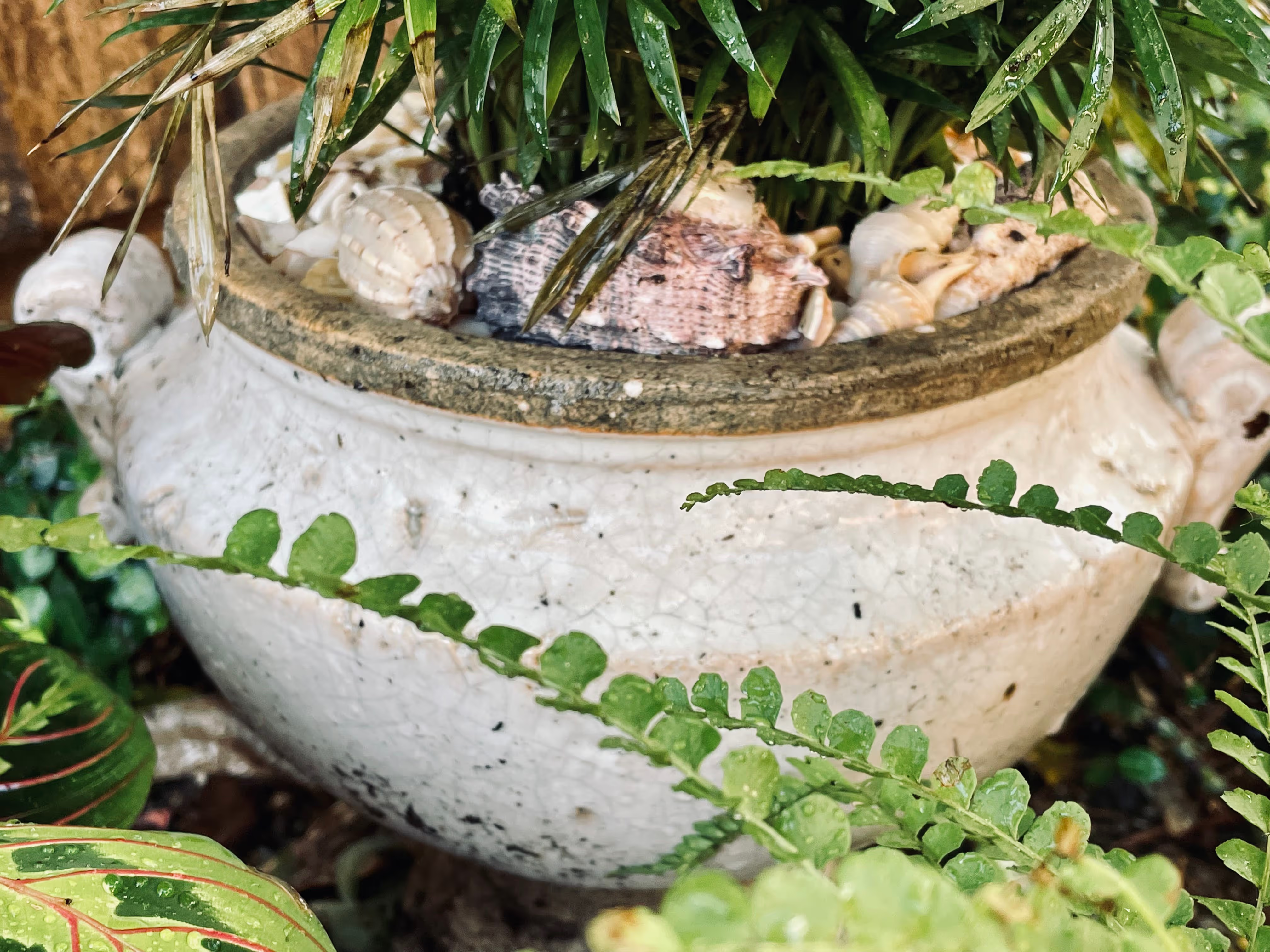
It’s February and you haven’t put away your holiday decorations. Perhaps it's because you know the depressing vacancies your spaces will be left with. After some delays in January, I am finally ready to kick off the New Year (better late than never!) with my annual tradition of filling the voids in my home and soul with my wintertime best friends: live house plants. While spring bulbs are yet to bloom and the skies remain gray, reenergizing the atmosphere with fresh greenery can lift the spirits and do wonders for your aesthetics.
One memorably green season of growth in my life was spent working at Terrain, a luxury home and garden mecca, in Westport, Connecticut. I served the likes of Anne Hathaway, Harry Connick Junior, Susan Serandon, and others who frequented the store. I was personally advised by our most regular shopper, Martha Stewart, on how to keep my Christmas Amaryllis blooming year after year. In late January, after the holidays, Terrain’s warehouse floor would become flooded with the most glorious house plants from the exotics to endless versions of the fiddle leaf fig. Droves of locals would come in to replenish their spaces. I had a heck-of-a-lot-of-fun learning how to advise eager patrons, all the while eyeing the babies I’d adopt and learn to raise myself. A few things I learned from my experiences:
Think like a Plant
- Plants naturally like to be outside. That doesn’t mean they need direct sunlight. Most plants like morning sun and afternoon shade and many like full shade. THAT’s why we can successfully grow them inside.
- Plants in the ground naturally drain into the soil when it rains. There is no pot holding in the water, thus it is almost always best for your pot to have a drain hole.
- Most plants need some sunlight, but only cacti can handle beating sunlight. That is why house plants do well in bright, indirect light.
- Hardy looking plants are usually lower maintenance while delicate looking plants are more high maintenance.
How to become a green thumb
- GET EASY PLANTS FIRST
- GET A MOISTURE METER so you know when to water (That is 90% of the battle for becoming a green thumb.)
- GET PLANT FOOD STICKS and replace them every 6-12 weeks, or whenever you think about it
- GET LEAF SHINE to keep your babies looking their best
Once I got all that down, I became successful at raising my below favorites:
1. Monstera
- Description: Monstera deliciosa, commonly known as the Swiss cheese plant, is recognized by its large, glossy leaves with unique splits and holes.
- Care Tips:
- LIGHT: Provide bright light, but not direct. Even if across the room from a window, they will thrive, but they will gravitate towards the nearest light source. Regularly turn the pot it to keep its shape.
- WATER: Monstera’s like to be on the dry side. When the moisture meter is fully inserted and shows “dry”, soak the soil thoroughly with running water (about every 6-8 weeks).
- POTTING: These like to have cozy roots. Keeping them in their plastic pots and putting them inside a decorative pot makes it easy to take them out for waterings and replace them when the soil is drained. They rarely need re-potting.
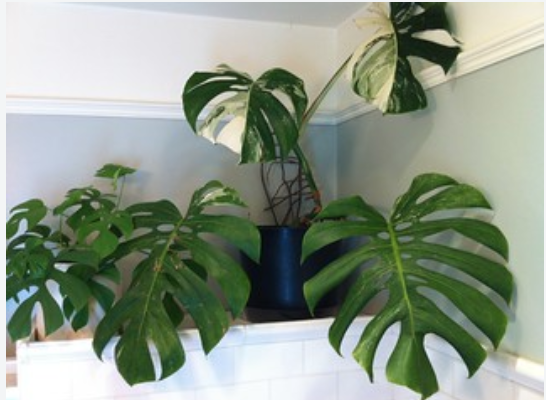
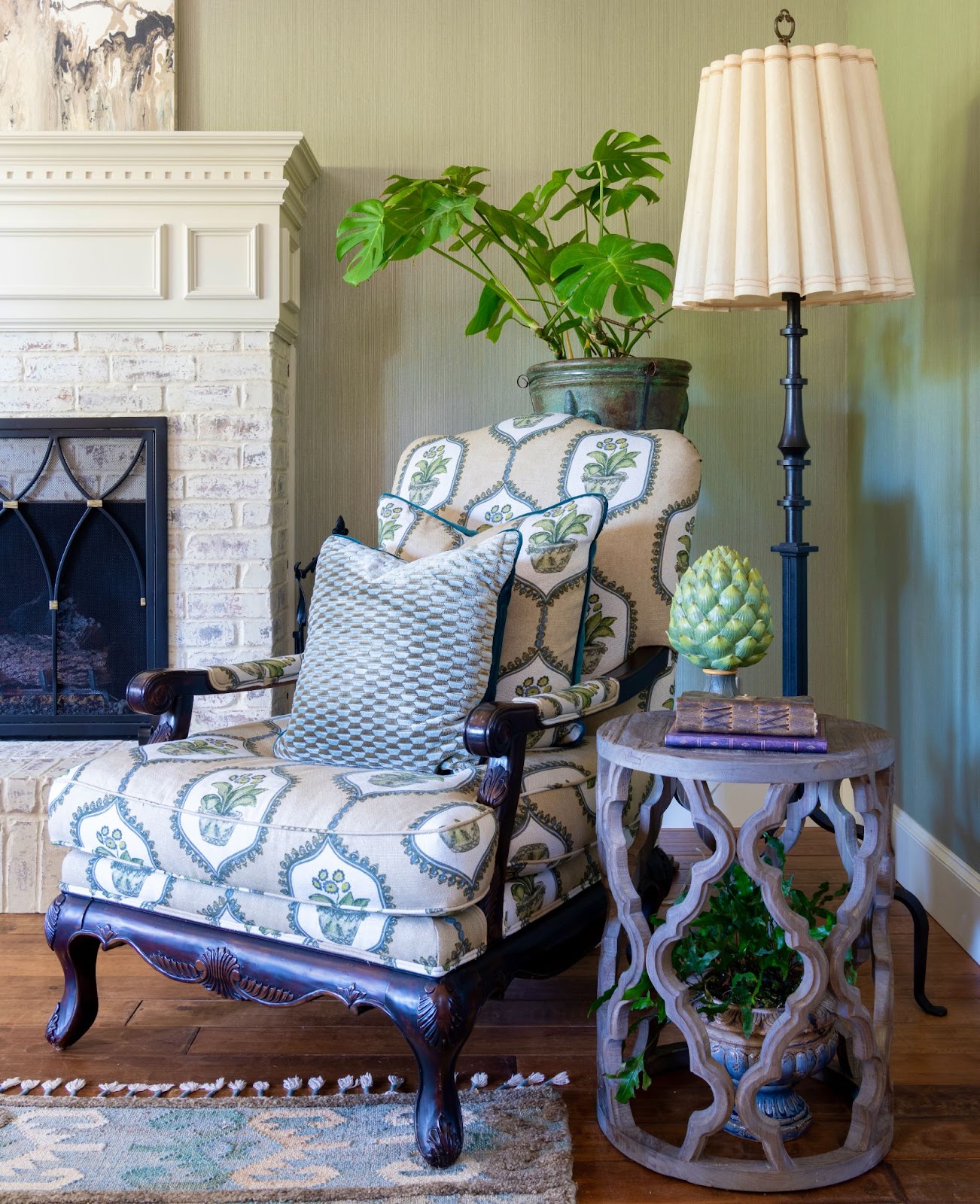
2. Fiddle Leaf Fig
- Description: Ficus lyrata, or the fiddle leaf fig, is known for its broad, violin-shaped leaves and tree-like appearance. They can be pruned and shaped. A more novel variety has notably smaller leaves in thicker clusters and make great topiaries.
- Care Tips:
- LIGHT: You can’t fudge on the light with these guys, they like it! But not too direct.
- WATER: If you’re methodical, 2 cups of water every 2 weeks is perfect for the average size plant. I am NOT methodical. When I notice a slight droop I give it a generous soak.

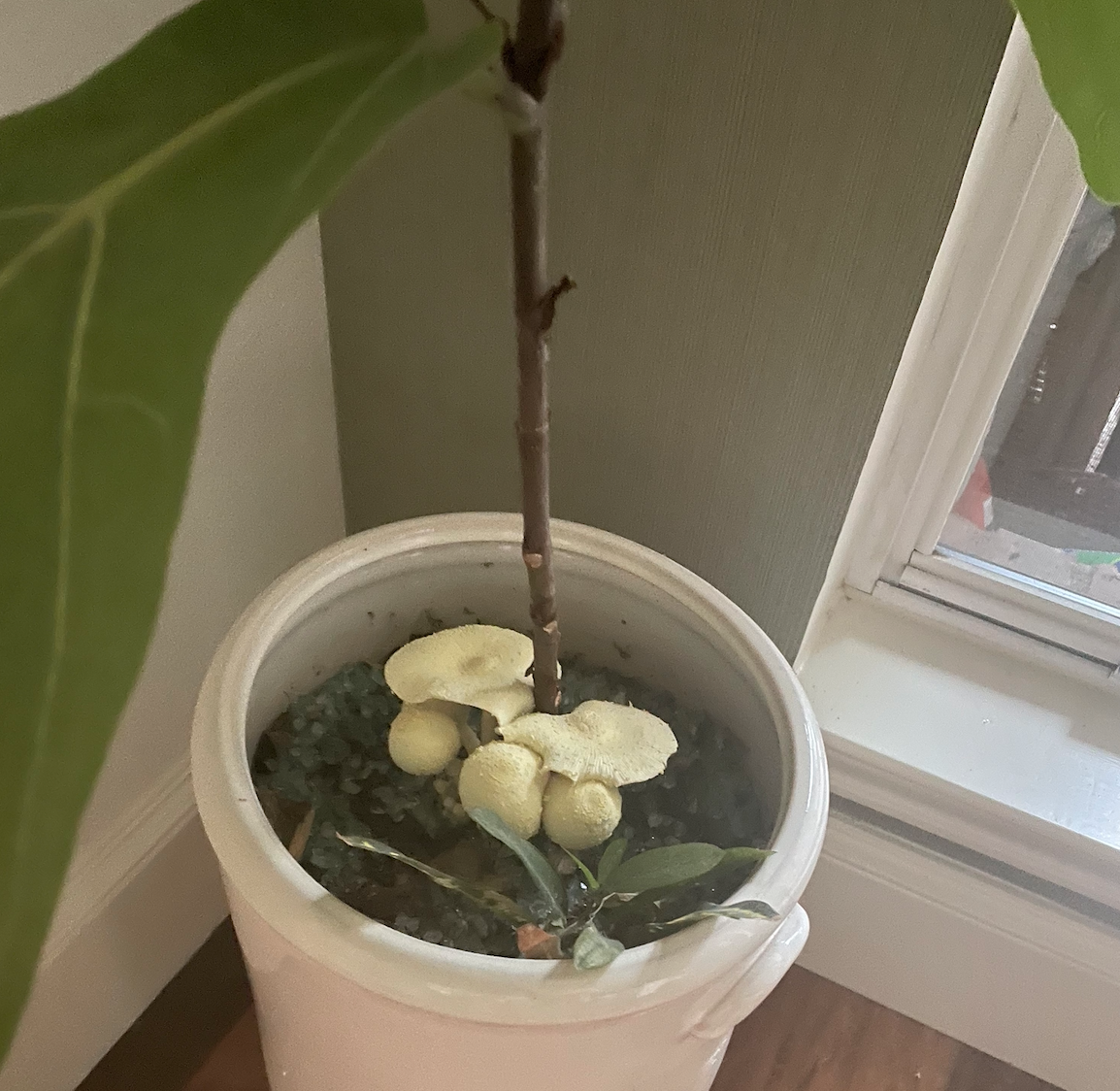
Mushrooms are a byproduct of good soil conditions and mean you’ve given your plant a great home.
3. Staghorn Fern
- Description: Platycerium bifurcatum, the staghorn fern, has distinctive antler-like fronds and is often mounted on boards. These will last a long time with easy care.
- Care Tips:
- LIGHT: “Provide bright, indirect light” is standard care but these can fare with a little less light if necessary.
- WATER: Misting to maintain humidity is also encouraged, but I never misted mine, and it did great.
- POTTING: These can be planted in a pot or mounted to a wooden board.
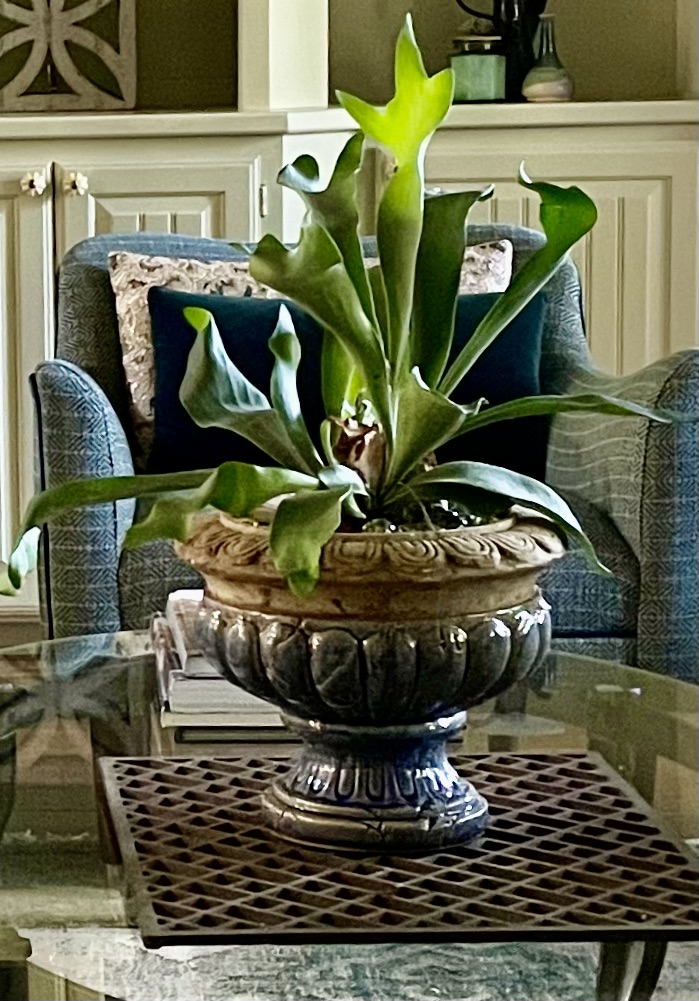
The above pot with staghorn fern does not have a hole, so I used well-draining soil. An orchid mix is a great option in this case.
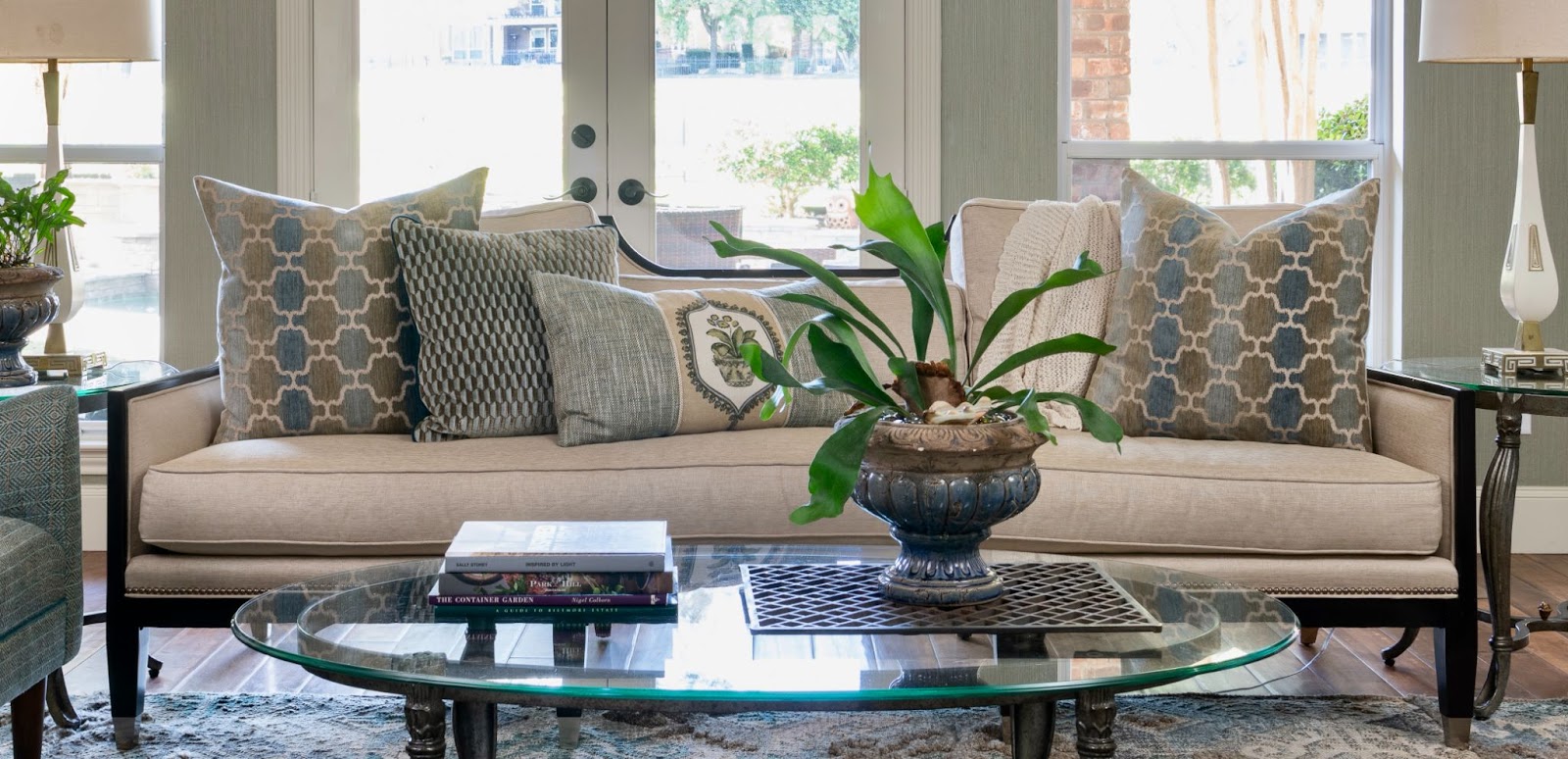
4. Anthuriums
- Description: Anthuriums are known for their oblong, ruffled edge, dark green leaves. They can become quite large and dramatic looking.

- Care Tips:
- LIGHT: Place in bright, indirect light. The more light these guys get, the bigger and brighter the leaves.
- WATER: Keep soil consistently moist but not waterlogged.
I can’t wait to try one of these!
5. Maidenhair Fern
- Description (My dream fern!): Adiantum, or maidenhair fern, features delicate, lacy fronds and is known for its graceful appearance.
- Care Tips: This one is not for the faint of heart. Even experts often have to replace them every few months (and don’t believe the articles that say otherwise). But they are worth it for their gorgeously delicate vibe.
- LIGHT: Avoid direct sunlight. These are shade loving but need some light.
- WATER: Keep the soil evenly moist. Don’t let this one dry out, ever.
- MISTING: They like LOTS Of moisture. The best place to grow one of these is in a bath/shower window where there are regular sources of humidity. Otherwise, keep the little mister by the pot and mist it daily.
- Avoid drafts. (That’s what killed mine, which I’d placed near the back door).
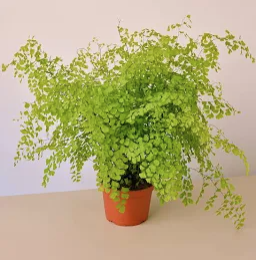
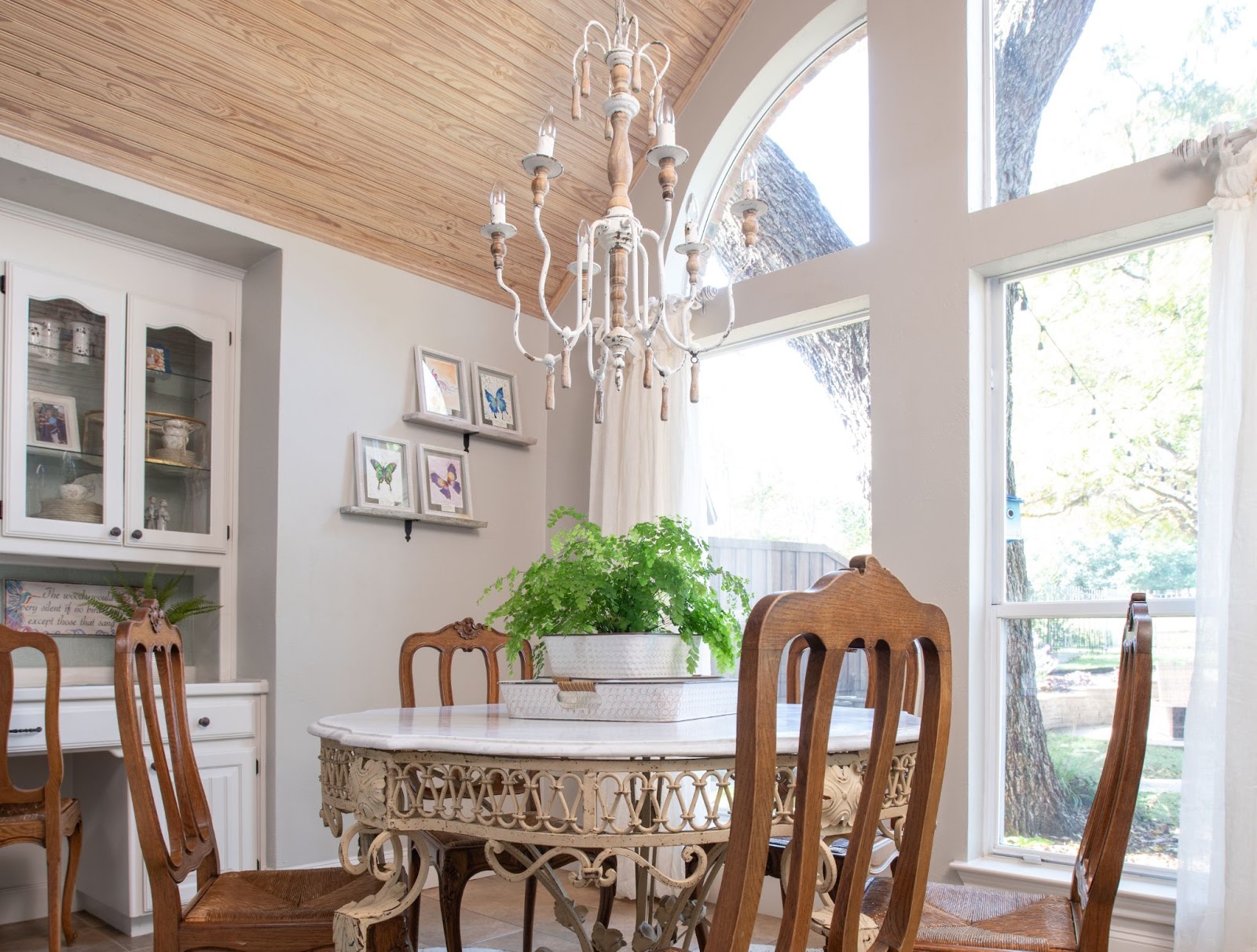
I chose this beautiful maidenhair fern as a focal point for this breakfast room photoshoot.
Pots Tell Stories
Pots and plants can be great conversation pieces, especially if there are stories and memories
associated with acquiring the pots. Featured below are my favorite authentic French pots acquired on an anniversary trip cycling through the Loire Valley in France.
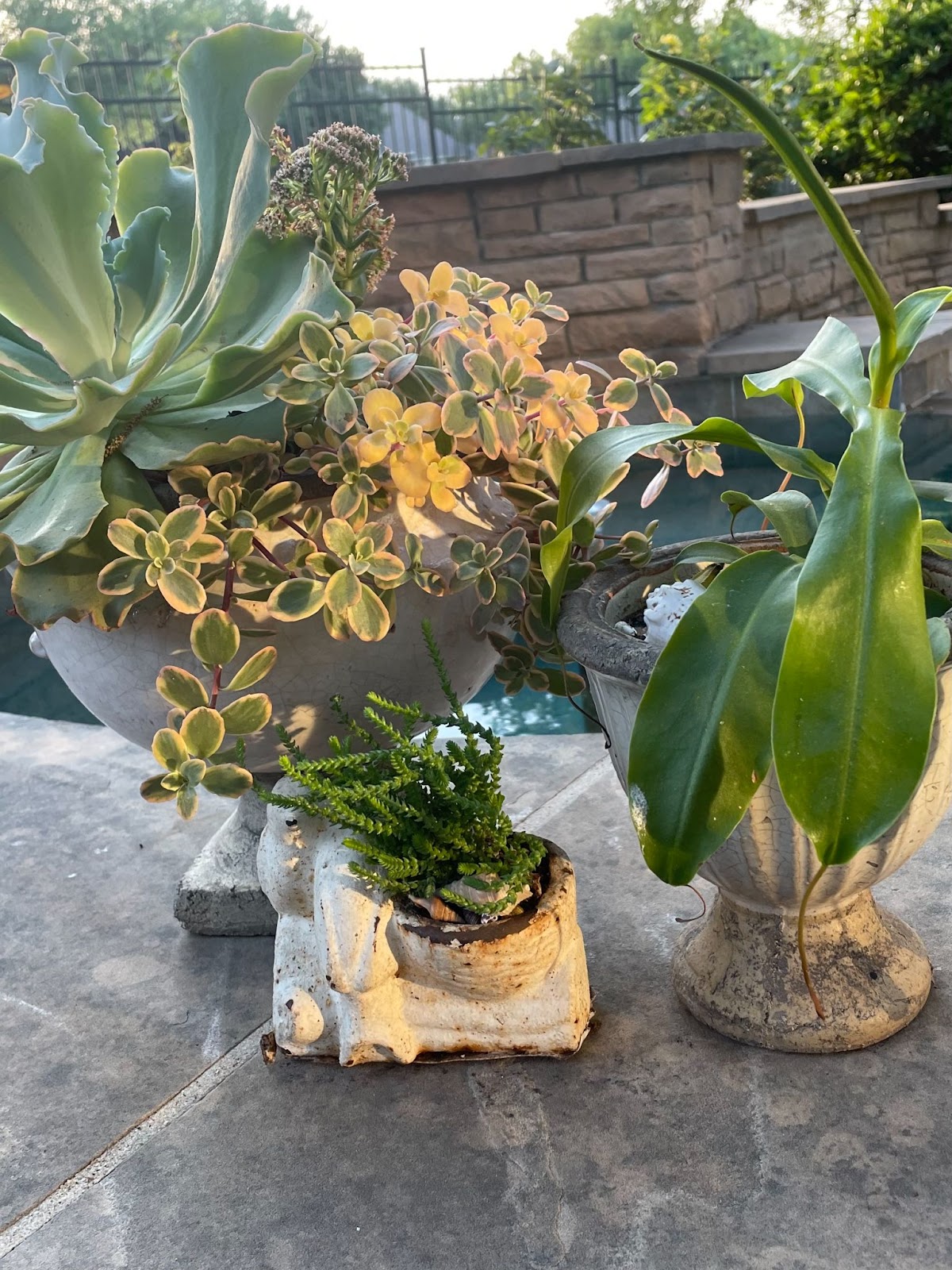
It’s All About the Soil Toppers
No one wants to see your dirt. The best way to step up your potting process and give romance to even your run-of-the-mill plants is to invest in a selection of interesting soil toppers and carefully arrange them all the way from the base of the plant to the edge of the pot to completely hide the dirt. This is a big reason you want a moisture meter, so that you don’t have to feel the soil with your finger and disturb the topper. I’ve used everything from sea-shells to glass beads to baby pinecones. Terrain has a nice selection of soil toppers. Hobby Lobby has a good selection of stones and sea shells.
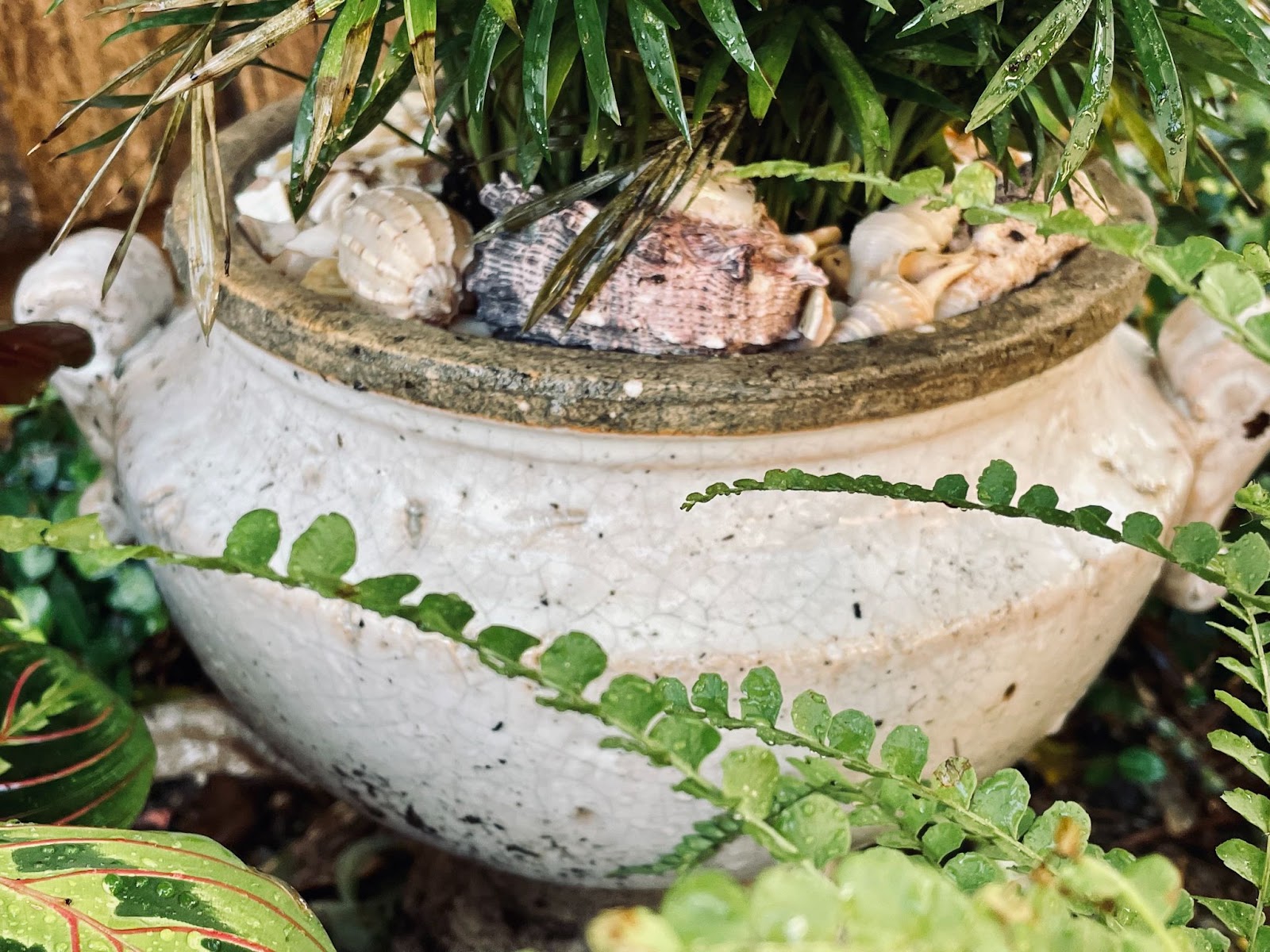
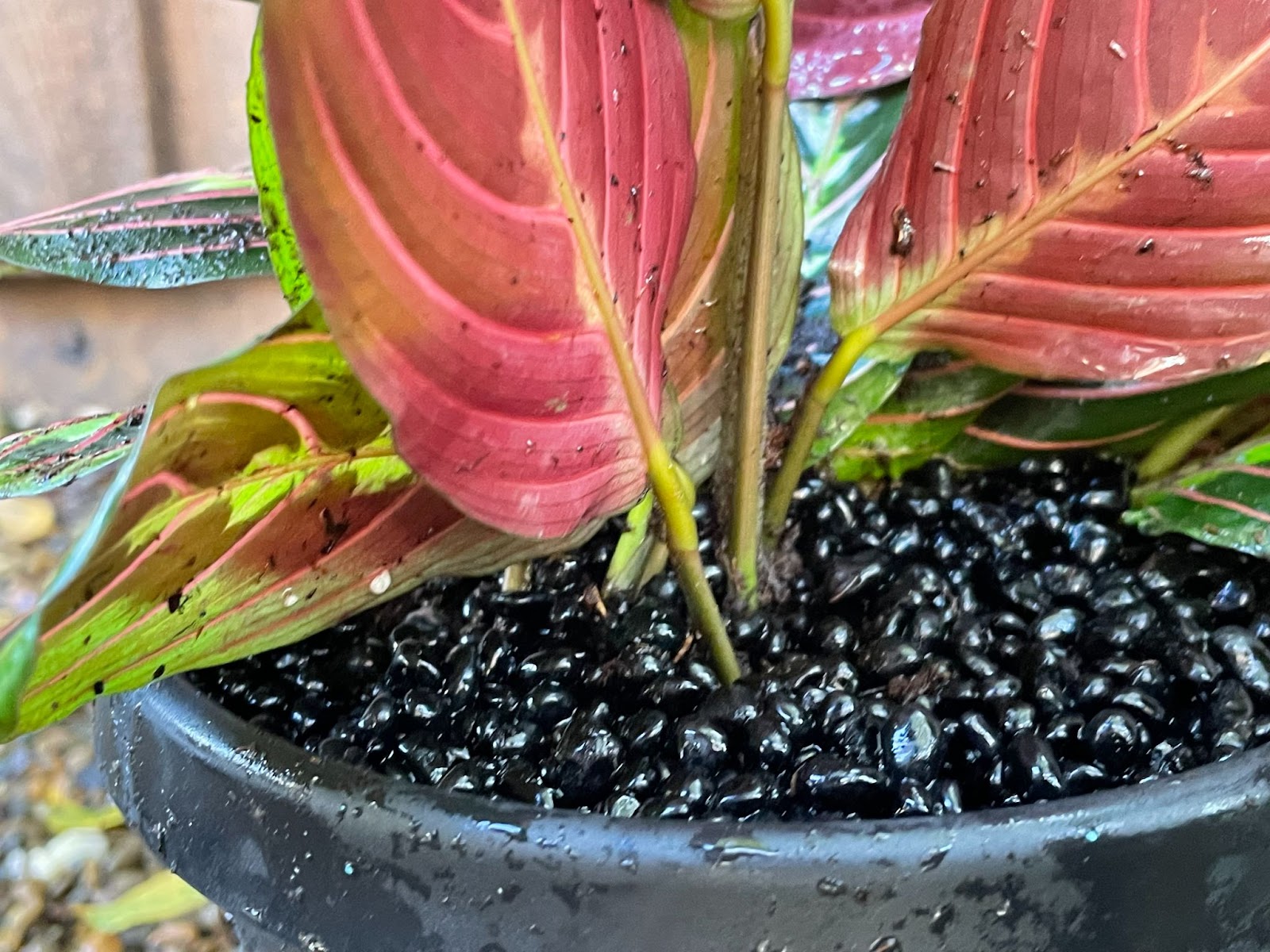
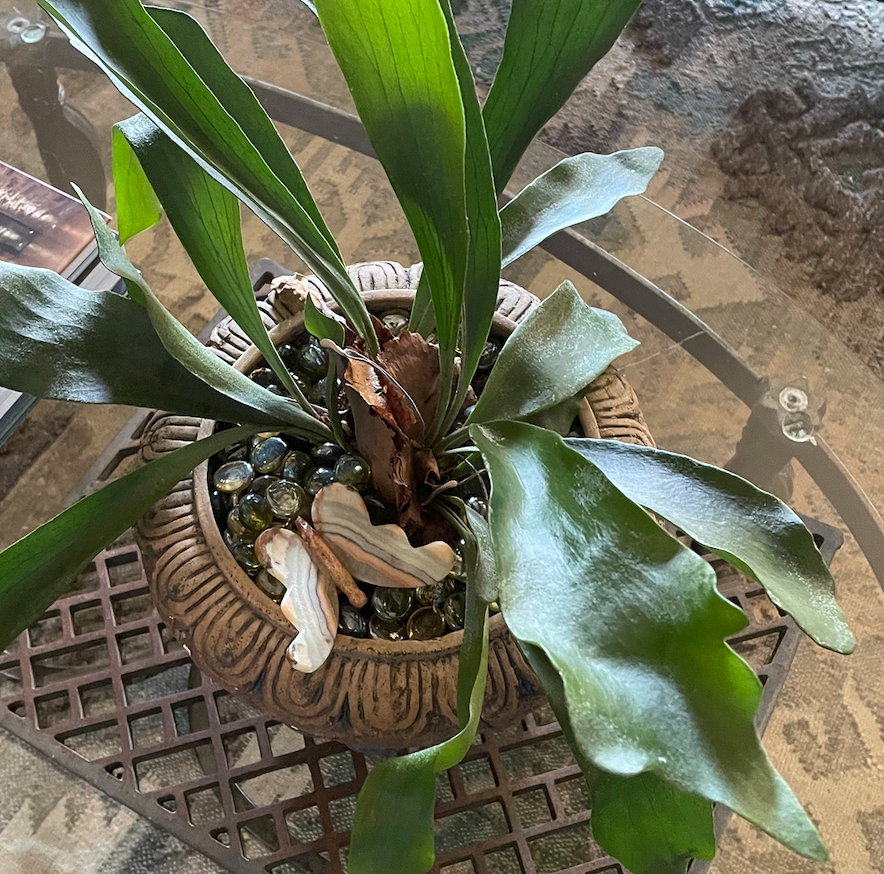
There are many articles on decorating with house plants. Instead of me writing one more, reach out to us at Liz Gabriel Interiors LLC for help with plant selections, care, and styling. We really do have a passion for the healing and life-giving effect of using live plants in our Clients’ homes and include them in every project. If you just can’t take the watering, we also have access to the most excellent quality faux babies you can find. Happy planting!
Liz Gabriel Interiors, LLC, based in McKinney, TX, is driven by the passion to tell stories in spaces. We focus on home-decorating and small renovations to preserve our mission of story-telling as part of a healing lifestyle.
BEAUTY IN THE HOME IS AN ELIXIR TO THE SOUL

